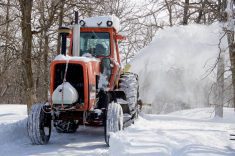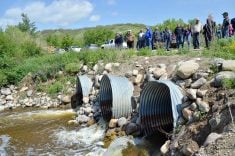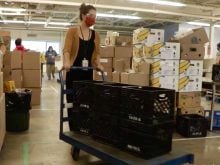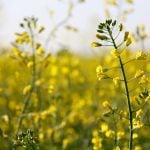WATER | More and more technology is coming into play when planning management projects
It’s another year in which flooding is on Manitoba’s mind.
In May, communities along the Red River suddenly became islands after almost a month of weekly Colorado lows. Major highways were closed for weeks. Municipal roads were washed out. Residents were filling and placing sandbags.
In mid-June, producers in Manitoba’s Interlake faced flash flooding after yet another storm dropped more than 18 centimetres (seven inches) of rain in the Fisher Branch area.
For anyone with even a few years of experience in the province, dry years of the last five years or so notwithstanding, other bad flood years are an easy jaunt down memory lane.
Read Also
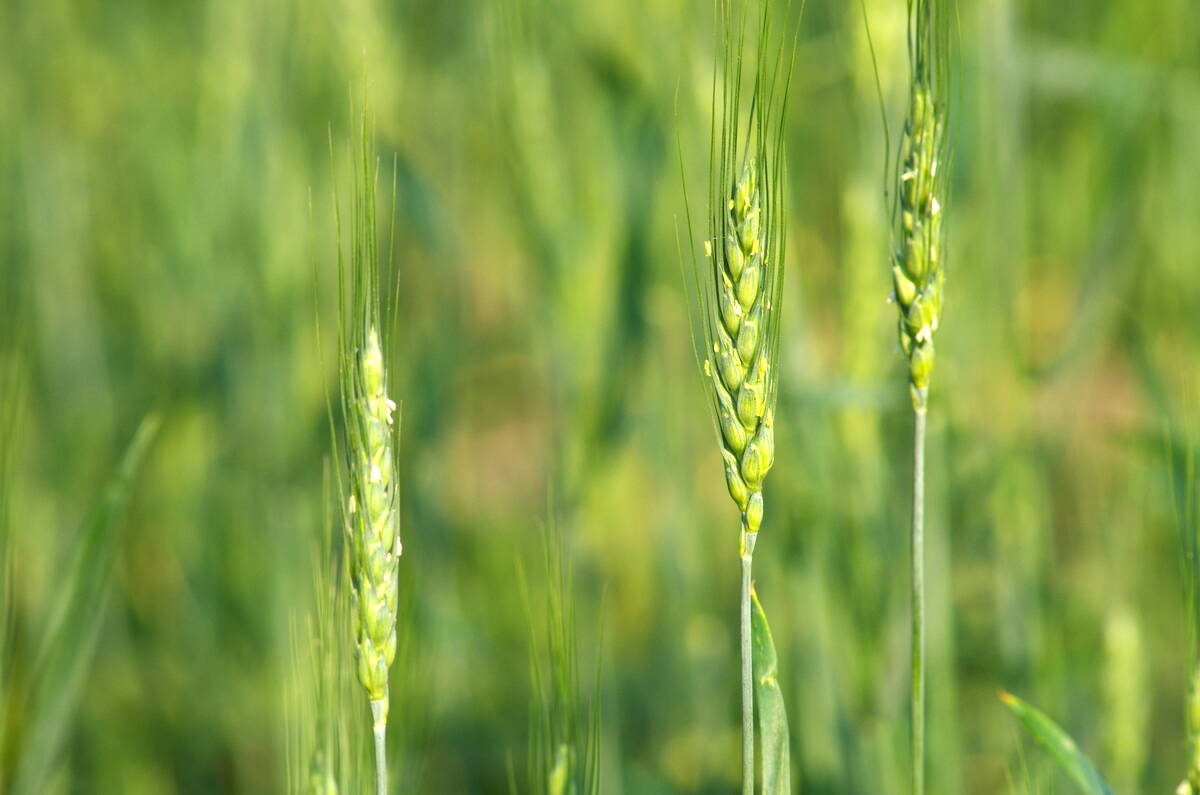
Code cracked on nitrogen-fixing wheat?
U.S. crop breeders have created a wheat variety capable of fixing its own nitrogen rather than relying on fertilizer.
In western Manitoba, the Souris River and Assiniboine River flood of 2014, as in 2022, was driven not by spring run-off but by torrential rain.
Further back was a 2011 event that a provincial taskforce later described as a flood of “a scope and severity never before experienced, in recorded history, in this province.”
More than 7,100 people were evacuated that May. Floodwaters claimed or damaged more than 650 municipal roads, 600 bridges and sparked review around water management at the provincial and international levels. In its final report, the same provincial task force estimated the damage at $1.2 million in Manitoba.
And, of course, there was 1997’s “Flood of the Century,” an event that still looms large in the collective mind of Manitobans.
Every time it happens, policy makers and water management experts take another look at how we can prepare for the next one.
In an era where society is being told to brace for more weather extremes, and where the list of potential projects is endless and resources are finite, efficiency is the name of the game.
Why it matters: More technological tools require more and better data underpinning to determine which water management projects are pursued.
Greater technical capacity will allow watershed districts and other groups to choose projects that bring the most bang for the buck, according to Steve Strang, managing director of the Red River Basin Commission (RRBC).
The organization has turned to LiDAR ground mapping to inform its strategies.
“It basically allows you to look at the lay of the ground from the seat of your desk and then, when you’re giving considerations to, how do I address ‘this’ problem, such as flood and flood mitigation, you can now look at it not only as a small picture. So, you’re not just addressing one area; you’re addressing the whole area,” said Strang.
Short for “light detection and ranging,” LiDAR uses aircraft-mounted laser scanners to send brief pulses of light at the ground. In conjunction with GPS technology and navigation systems, it then reads the bounce-back to map elevation of the ground below.
The resulting data can be plugged into hydrological modeling to estimate water flows in the region.
After the 1997 flood, an initiative began to map out the Red River Basin using this method. In the U.S. portion of the basin, LiDAR mapping was complete in 2006, according to the RRBC but Manitoba progress was considerably slower, Strang noted. Though some area had been flown, the map was spotty, with significant holes.
Not until last year was mapping completed across the region. A joint project between the commission and provincial government finished off LiDAR data collection in the remaining areas of the Red River Basin and updated information from previously mapped areas.
The increased data set will help watershed districts choose projects with the best chance of widespread impact, Strang said.
At the same time, the equation used to gauge potential projects goes beyond water management. When the RRBC looks for a new spot for a reservoir, said Strang, it is also looking for ecological factors including wildlife habitat and hydrological factors like aquifer connectivity.
“Suddenly your tax dollar’s gone a lot further…You’re not just addressing one thing. You’re addressing multiple things that we’re facing from climate change,” he said.
“Sometimes, what you’ll find is that even though you’re addressing a problem in one area, the solving of that problem may exist in somebody else’s municipality…Those are the things that we have to look at. It can no longer be about one municipality or one watershed.”
Aquanty
The Assiniboine River Basin Initiative (ARBI) has turned to the Aquanty project, a hydrological model spearheaded by the Manitoba Forge and Grassland Association (MFGA). ARBI has used the model to assess the impacts of small “off-stem” water retention projects along the eastern Souris River.
Such projects would slow water flow in times of flood and create a buffer for drought years.
“There’s a desire from many to look at some of those windows of opportunity and what makes sense,” said ARBI executive director Wanda McFadyen.
The first phases of the Aquanty project developed five interconnected models – one for the total basin, on for three sub-basins and a micro-analysis of the smaller Assiniboine-Birdstail Watershed. The idea is to mimic water behaviour based on ground mapping, land use and other factors. Different scenarios can then be run through the model.
It has already been used to assess soil health and land drainage impacts on water flow in the Assiniboine River Basin.
Steve Frey is a senior scientist at Aquanty Inc., the company developing the MFGA’s model.
“We did a couple of studies; one in Virden to look at mitigation strategies to really lessen the risk of the type of event that occurred in 2014. We also did a study in the Shoal Lake area,” Frey said.
That study looked at how wetland loss could impact flood risk.
Those initial models have been available since 2018 to municipalities and watershed districts that want to use it for water management planning. Availability of the models has spread through word of mouth.
“We don’t do a lot of sales and marketing…it’s really the MFGA that we’re working for in Manitoba,” Frey said. “A lot of the attention that has been given to the project has come through outreach that the MFGA does.
“I think if you look at how the tool kind of aligns with the broader mission of the MFGA to help really develop sustainable agricultural landscapes and resilient agricultural landscapes in the face of climate change, I think that our technology really aligns well with the organization’s objectives.”
Still to come
That first phase of Aquanty provided groundwork for the MFGA’s next project, development of a real-time hydrologic forecasting tool.
Announced last year, the tool will eventually allow the public, including farmers, to check what the water situation might look like in their area, in the same way they might check the weather.
The MFGA envisions a forecast integrating soil moisture data, ground water depth, depth to groundwater, surface water levels, stream flow, exfiltration and water recharge. Users would be able to access those data layers through an online portal and could hone in on their watershed or the closest data collection station.
In a May newsletter, the association characterized the project as a “valuable tool in the producer’s tool kits as water-influencing climatic events such as drought and flood — and sometimes both in short time frames over a calendar year — continue to showcase the potential for planning, awareness and resilience around land and water on farms and ranches.”
The tool will likely be geared toward the medium-term, Frey said, which is three days to two weeks, and perhaps out to 32 days. That would give producers a useful horizon for planning feed or water supplies or to move assets out of harm’s way.
The MFGA has pitched a seven-day forecast and it plans to launch the forecasting tool next year and, in the meantime, will consult various stakeholders.

Flood planning
There is interest and investment in developing tools to avoid water-related crises, Frey noted.
Governments, industry and other stakeholder have provided funds for his company’s work with the MFGA.
The first phase of Manitoba’s Aquanty models came with a $3 million price tag. Likewise, the announcement of the forecasting tool last year came with a promise of $1.1 million from the federal government.
Work such as the completed LiDAR mapping in the Red River Basin can also help strengthen the available tools and response to flood events. Frey said LiDAR is one of the most important pieces for short and long-term hydrological forecasting.
“More LiDAR data makes our simulations better,” he said. “The more the landscape is covered with LiDAR, the more of the landscape that can subsequently be kind of simulated in a higher quality simulation.”
He added that policymakers are well aware of the need to develop these technologies but more public awareness about available tools is needed.
“Obviously, from a scientist’s perspective, we could always use more funding, but I wouldn’t want to make the statement that we’re not doing enough to support the tool development,” he said.
“The governments are investing and the technology providers like Aquanty, we’re kind of rising to meet the challenge. Now, maybe, it becomes an issue where we have to make people aware of what we’re doing.”




